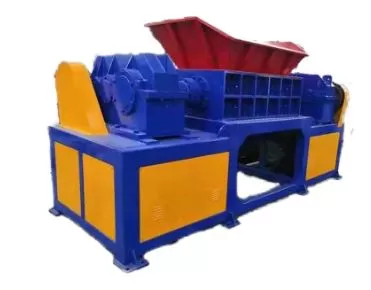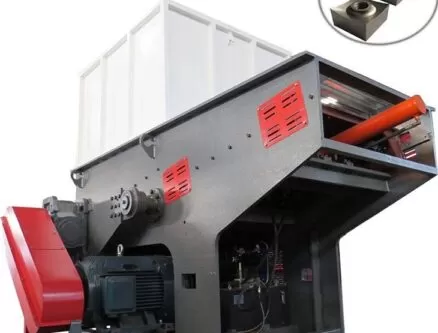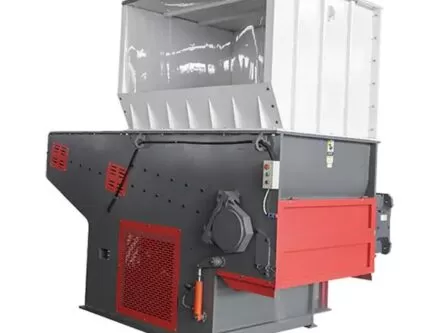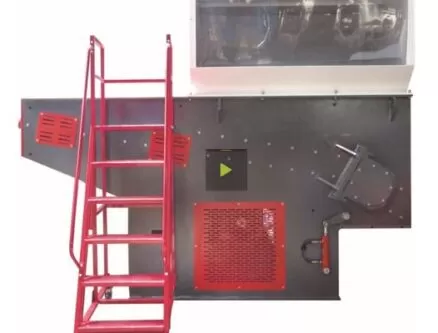The automotive industry is under pressure. Regulators want lower emissions. Consumers want greener vehicles. But how do we reduce waste inside the production process? I’ve seen too many car factories toss valuable plastic scrap into the landfill bin—when it could’ve been shredded, recycled, and reused. At Amige, we help manufacturers stop wasting and start winning. Plastic shredding isn’t just an afterthought. It’s the green engine behind the scenes.
The short answer? Plastic shredding technology allows automakers to recycle bumpers, dashboards, and trim pieces on-site, reducing both waste and carbon emissions. It turns bulky scraps into reusable granules—cutting material costs and boosting sustainability efforts at the same time.
Let’s shift gears and explore how this simple tech leads to serious environmental impact.

Why Does the Automotive Industry Generate So Much Plastic Waste?
Because cars are basically plastic tanks on wheels now.
In modern vehicle manufacturing, plastic parts account for 10–15% of the vehicle’s total weight. We’re talking about:
- Bumpers
- Door panels
- Instrument clusters
- Air ducting
- Seat bases
- Fuel tanks
And guess what? These components are manufactured in high volume, with high scrap rates. During assembly and part trimming, massive amounts of plastic offcuts and rejects are discarded daily.
Now imagine this happening in every factory, on every shift. That’s a mountain of plastic waste no one wants to talk about.
How Does Plastic Shredding Actually Work in Car Manufacturing?
It’s not rocket science. But it’s surprisingly effective.
At Amige, we install industrial plastic shredders directly on or near automotive production lines. Here’s how it works:
- Workers feed leftover parts—say, a misformed bumper—into the machine.
- The shredder chews it down into small flakes or chunks.
- These plastic fragments are collected, washed if needed, then sent to reprocessing (like extrusion or injection molding).
- Voilà—new parts, made from old plastic.
This creates a closed-loop recycling system inside the factory. Efficient, clean, and good for the bottom line.

What Types of Automotive Plastics Are Shredded?
We’ve worked with almost every automotive polymer out there.
The most common include:
- Polypropylene (PP) – used in bumpers, trims, and under-hood components
- ABS (Acrylonitrile Butadiene Styrene) – for dashboards and consoles
- Polyamide (PA) – for engine parts and housings
- Polyethylene (PE) – for ducts and tanks
Each type behaves differently in the shredder. That’s why we design our blades and chamber configurations based on the polymer.
Want to get nerdy? Our double-shaft shredders with wear-resistant alloy steel can handle glass-fiber-reinforced PP like it’s butter.
If you don’t know what type of plastic your parts are made from, check with your material supplier—or give us a sample. We love a good plastic puzzle.
What Are the Environmental Benefits of On-Site Shredding?
This is where things get exciting.
Let’s break it down:
- Less waste sent to landfills – obviously
- Lower demand for virgin plastic – you reuse what you already have
- Reduced CO₂ emissions – manufacturing from recycled plastic uses up to 80% less energy than new resin production
- No transport emissions – shredding on-site means fewer trucks hauling scrap away
- Lower water and chemical use – in some cases, you skip the full-blown recycling center entirely
I like to call it decentralized recycling with centralized benefits.
And let’s not forget—shredding keeps you compliant with ISO 14001 environmental standards, which more automakers are aiming for.

Does Shredding Help Meet ESG and Circular Economy Goals?
Absolutely.
ESG (Environmental, Social, and Governance) reporting isn’t optional anymore. Investors, customers, and regulators want receipts.
By implementing plastic shredding technology, you can showcase measurable wins in:
- Waste reduction
- Material recovery
- Carbon footprint control
- Product lifecycle extension
This isn’t greenwashing. It’s real action.
And it fits perfectly into the circular economy model—where nothing is wasted, and materials flow in loops instead of lines.
At Amige, we’ve helped several Tier 1 suppliers publish case studies showing how our shredders helped cut plastic waste by 60% in 12 months.
What About Cost Savings—Is It Worth It?
You bet.
Let’s do some quick math.
Say your factory generates 2 tons of PP scrap per day. Normally, you pay to dispose of it—let’s say $150/ton. That’s $9,000/month in disposal costs.
Now, install a shredder. That same scrap becomes reusable material. The market value of recycled PP granules can be as high as $500/ton.
So instead of losing money, you’re saving it—and possibly even making it.
Within 6–12 months, the shredder pays for itself.
And did I mention you look like an eco-hero at the quarterly review?

How Can Automakers Get Started with Shredding Technology?
Good question. Here’s my advice.
- Audit your plastic waste – Where is it generated? What type? How much?
- Define your goals – Is it compliance, cost-saving, or both?
- Talk to shredding equipment experts – (Hey, that’s us. I’m biased. But I’m also right.)
- Test before you invest – We offer demo runs on real material samples
- Plan for integration – Do you want a centralized shredding room or decentralized units near the line?
- Train your staff – Shredders are safe and easy to use, but education is key
Start small. Grow big. We’ve helped companies set up single-machine stations that later scaled into full in-house recycling plants.
Are There Any Real-World Success Stories?
Absolutely. Let me share a few.
One of our automotive clients in Suzhou used to dump 30 tons of bumper scrap per month. After installing two of our shredders, they now recycle it all and use the output for non-structural parts like battery trays and seat shells.
Another client in Europe combined shredding with extrusion to create recycled door panels, cutting costs by 22% and winning a sustainability award from their OEM partner.
These aren’t experiments. They’re working systems.
And your factory could be next.
What’s the Future of Plastic Shredding in Automotive?
Here’s what I see coming:
- Smart shredders with sensor feedback and auto-adjusting blades
- Cloud-connected waste tracking for ESG reporting
- Automated robotic feed systems for 24/7 recycling
- Integration with 3D printing using recycled flakes
- Hybrid materials handling, like metal-plastic blends
The future is clean, connected, and circular.
And shredding will be a foundational part of that future.
At Amige, we’re already prototyping AI-assisted blade monitoring systems. (Yes, I’m excited about it. It’s cool stuff.)
Conclusion
In the auto industry, plastic shredding isn’t just about waste control—it’s about smarter manufacturing. Cleaner factories. Better margins. And a planet that doesn’t groan every time a new bumper is built. Let’s build cleaner cars, starting from the inside.
